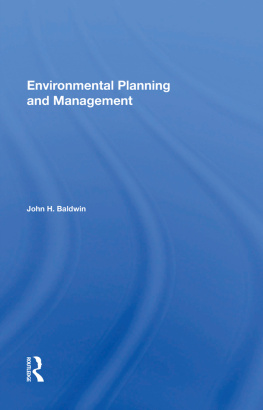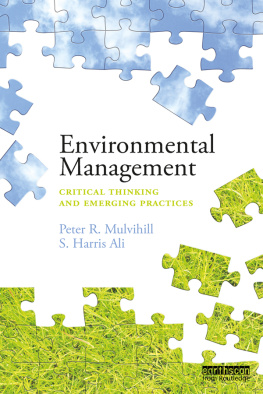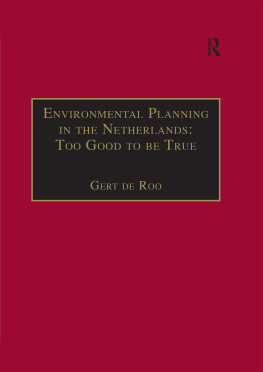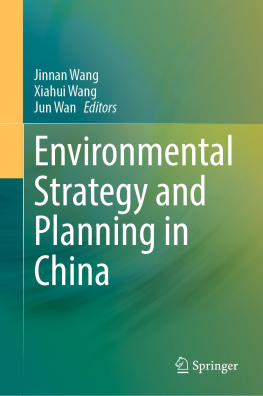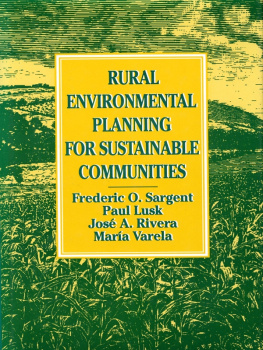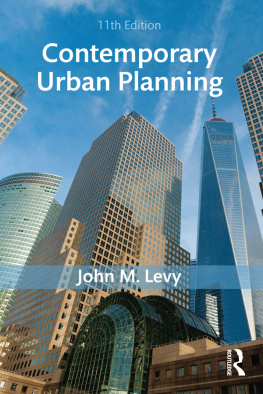John H Baldwin - Environmental Planning and Management
Here you can read online John H Baldwin - Environmental Planning and Management full text of the book (entire story) in english for free. Download pdf and epub, get meaning, cover and reviews about this ebook. year: 2019, publisher: Routledge, genre: Politics. Description of the work, (preface) as well as reviews are available. Best literature library LitArk.com created for fans of good reading and offers a wide selection of genres:
Romance novel
Science fiction
Adventure
Detective
Science
History
Home and family
Prose
Art
Politics
Computer
Non-fiction
Religion
Business
Children
Humor
Choose a favorite category and find really read worthwhile books. Enjoy immersion in the world of imagination, feel the emotions of the characters or learn something new for yourself, make an fascinating discovery.
- Book:Environmental Planning and Management
- Author:
- Publisher:Routledge
- Genre:
- Year:2019
- Rating:3 / 5
- Favourites:Add to favourites
- Your mark:
- 60
- 1
- 2
- 3
- 4
- 5
Environmental Planning and Management: summary, description and annotation
We offer to read an annotation, description, summary or preface (depends on what the author of the book "Environmental Planning and Management" wrote himself). If you haven't found the necessary information about the book — write in the comments, we will try to find it.
Environmental Planning and Management — read online for free the complete book (whole text) full work
Below is the text of the book, divided by pages. System saving the place of the last page read, allows you to conveniently read the book "Environmental Planning and Management" online for free, without having to search again every time where you left off. Put a bookmark, and you can go to the page where you finished reading at any time.
Font size:
Interval:
Bookmark:

52 Vanderbilt Avenue, New York, NY 10017
2 Park Square, Milton Park, Abingdon, Oxon OX14 4RN
Product or corporate names may be trademarks or registered trademarks, and are used only for identification and explanation without intent to infringe.
Baldwin, John H.
Environmental planning and management.
Bibliography: p.
1. Environmental policyUnited States. 2. Environ
mental protectionUnited States. I. Title.
HC110.E5B36 1985 363.7'056'0973 84-2281
- xvi
| Tables |
| Figures |
- 62 percent of the respondents said that their views were in sympathy with the environmental movement
| Pioneer State (Industrial Cities) | Climax State (Ecological Cities) |
|---|---|
| Few species with one or few dominant species (simplicity) | Many species with relative equality among species (diversity) |
| Quantitative growth | Qualitative growth |
| Competition among species, with few symbioses | Cooperation among species, with many symbioses |
| Short, simple life cycles | Long, complex life cycles |
| Mineral and nutrient cycles relatively open, rapid and linear | Mineral and nutrient cycles circular and slow |
| Detritus relatively unimportant in nutrient regeneration | Detritus relatively important in nutrient regeneration |
| Rapid growth | Growth controlled and limited by complex feedback circuits |
| Relatively inefficient use of energy |
Font size:
Interval:
Bookmark:
Similar books «Environmental Planning and Management»
Look at similar books to Environmental Planning and Management. We have selected literature similar in name and meaning in the hope of providing readers with more options to find new, interesting, not yet read works.
Discussion, reviews of the book Environmental Planning and Management and just readers' own opinions. Leave your comments, write what you think about the work, its meaning or the main characters. Specify what exactly you liked and what you didn't like, and why you think so.

